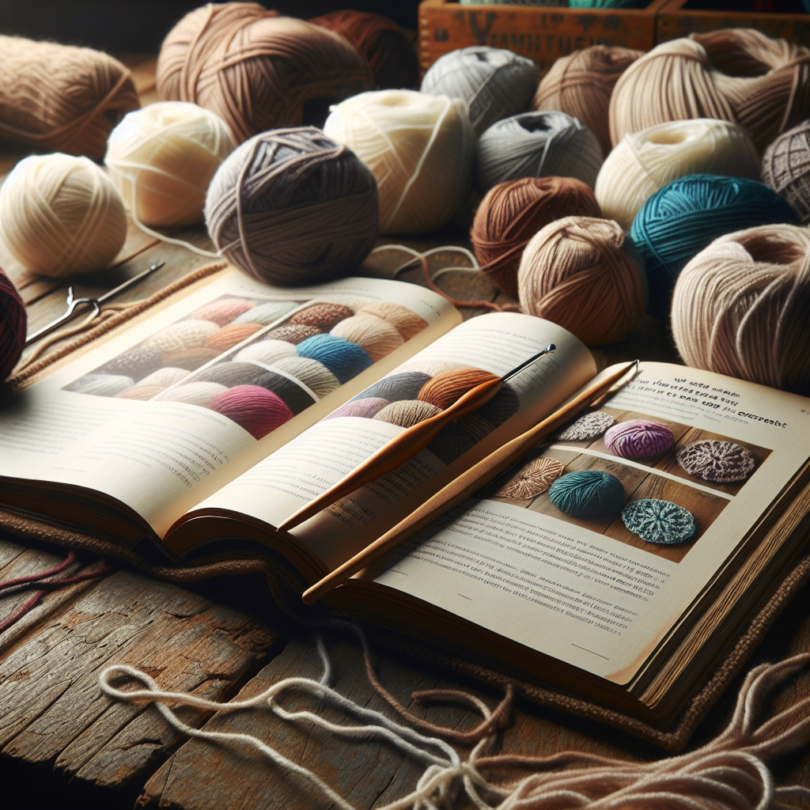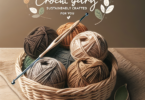When you’re ready to dive into the world of crochet, one of the first and most essential decisions you’ll make is choosing the right yarn. With so many types, textures, and colors available, it can feel a bit overwhelming. But don’t worry! This complete guide will help you understand how to choose the best yarn for crochet, ensuring that your projects come out beautifully every time.
Understanding Yarn Basics
Before we get into choosing yarn, let’s break down some foundational elements.
Yarn Weight
Yarn weight refers to the thickness of the yarn. It has a significant impact on the final look and feel of your crochet project. Here’s a handy table that outlines the various yarn weights:
| Yarn Weight | Description | Suggested Hook Size | Common Uses |
|---|---|---|---|
| Lace | Very fine, delicate | 0.6 – 1.25 mm | Doilies, shawls |
| Fingering | Lightweight | 1 – 2.25 mm | Socks, lightweight garments |
| Sport | Slightly thicker | 3.5 – 4 mm | Baby clothes, light sweaters |
| Worsted | Medium thickness | 4 – 5.5 mm | Blankets, scarves |
| Bulky | Thick and plush | 6 – 8 mm | Hats, blankets |
| Super Bulky | Very thick | 9 – 12 mm | Fast projects, home décor |
Fiber Content
Yarn is made from a variety of fibers, each bringing unique characteristics. Here are some common materials you’ll encounter:
- Acrylic: Affordable, durable, and easy to care for. Great for beginners and versatile for a wide range of projects.
- Cotton: Breathable and absorbent, perfect for summer garments and home items. It holds shape well but doesn’t have much stretch.
- Wool: Warm and elastic, wool yarn is ideal for cozy items. Merino wool, in particular, is soft and non-itchy.
- Blends: Many yarns combine different fibers to take advantage of the best qualities of each.
Factors to Consider When Choosing Yarn
When selecting the right yarn, consider the following factors:
1. Project Type
Different projects require different yarns. Here’s a quick list of what works best for various types:
- Garments: Use soft, non-itchy yarns like cotton or wool blends.
- Blankets: A durable option like acrylic or bulky wool can provide warmth and longevity.
- Accessories: Choose textured or colorful yarns to create visual interest.
2. Season and Climate
What’s the weather like where you live? You want your finished piece to be comfortable to wear. For instance:
- Hot Weather: Lightweight and breathable yarns like cotton are best.
- Cold Weather: Thicker, insulating types like wool can keep you warm and cozy.
3. Gauge
Gauge helps ensure your project turns out just right. Always check the yarn label for the recommended gauge and do a test swatch to ensure you’re on point.
4. Care Instructions
Consider how easy the yarn is to maintain. Some yarns are machine washable while others need special care. If you want something low-maintenance, acrylic is a great choice.
5. Color and Texture
Don’t underestimate the aesthetic aspect! Choose a color that inspires you, and consider texture as well. A smooth yarn will create general patterns, while a textured yarn offers more visual interest.
Tips for Making the Final Decision
Choosing the best yarn can be daunting, but here are some insider tips:
- Swatch First: Create a small swatch to see how the yarn works with your chosen hook size.
- Keep it Simple: Especially for beginners, opt for straightforward yarns without complicated textures.
- Feel it Out: Whenever possible, touch the yarn. The feel is just as critical as the look!
Frequently Asked Questions (FAQs)
-
What is the best yarn for beginners?
- Acrylic yarn is often recommended for beginners due to its affordability and ease of care.
-
Can I mix different types of yarn in one project?
- Yes, but ensure they share similar properties (like stretchability) to avoid issues.
-
What weight of yarn should I use for a blanket?
- Worsted weight or bulky yarn is ideal for creating cozy blankets.
-
How do I choose yarn for a specific pattern?
- Always refer to the pattern’s recommended yarn and gauge as a starting point.
-
Does yarn weight affect the finished size of my project?
- Absolutely! A heavier yarn will create a bulkier item, while lighter yarns will yield finer details.
-
How can I ensure my yarn won’t itch?
- Test different fibers against your skin. Merino wool and some silk blends are less likely to irritate.
-
How do I care for cotton yarn?
- Cotton can typically be machine washed but check the label for specific instructions.
-
Is it better to buy yarn locally or online?
- Both have advantages. Local shops allow you to feel yarn before buying, while online stores may offer a wider selection.
-
What is the difference between dye-lots?
- Dye-lots can vary in color; always purchase enough yarn in the same dye-lot for a project to ensure color consistency.
- How much yarn do I need for a project?
- Project requirements vary but patterns typically indicate yardage. It’s always good to buy a little more than needed.
Conclusion
Choosing the right yarn for crochet can transform your projects from simple to stunning. By considering factors like yarn weight, fiber content, and project type, you can select the perfect yarn to create beautiful, lasting items. Remember to experiment, have fun, and enjoy the process of crafting with yarn! Happy crocheting!






Leave a Comment